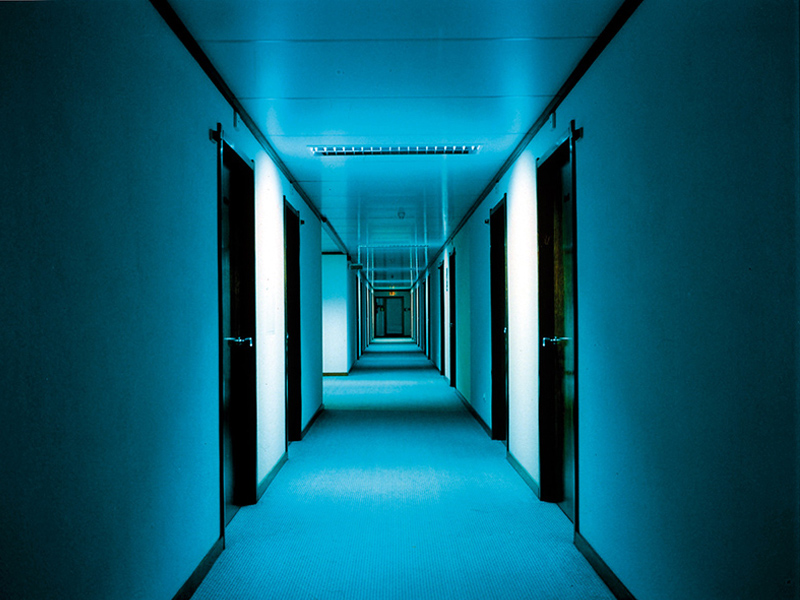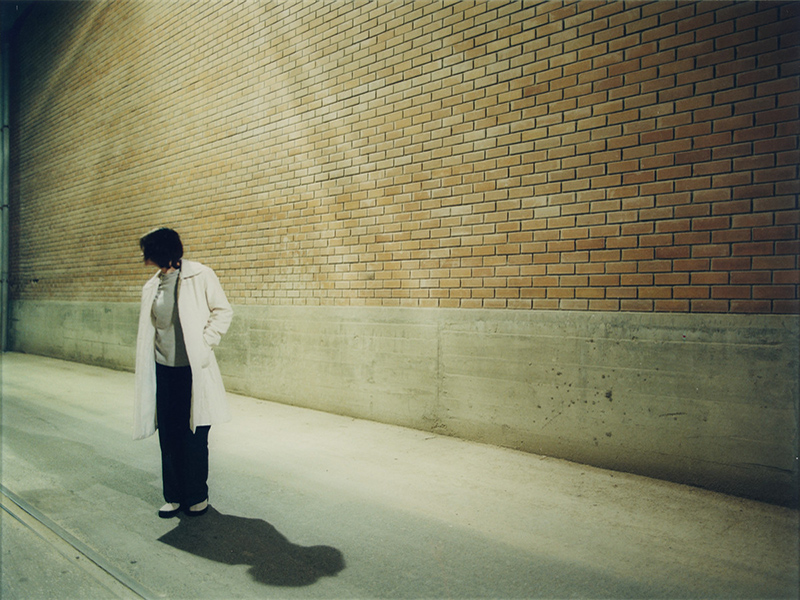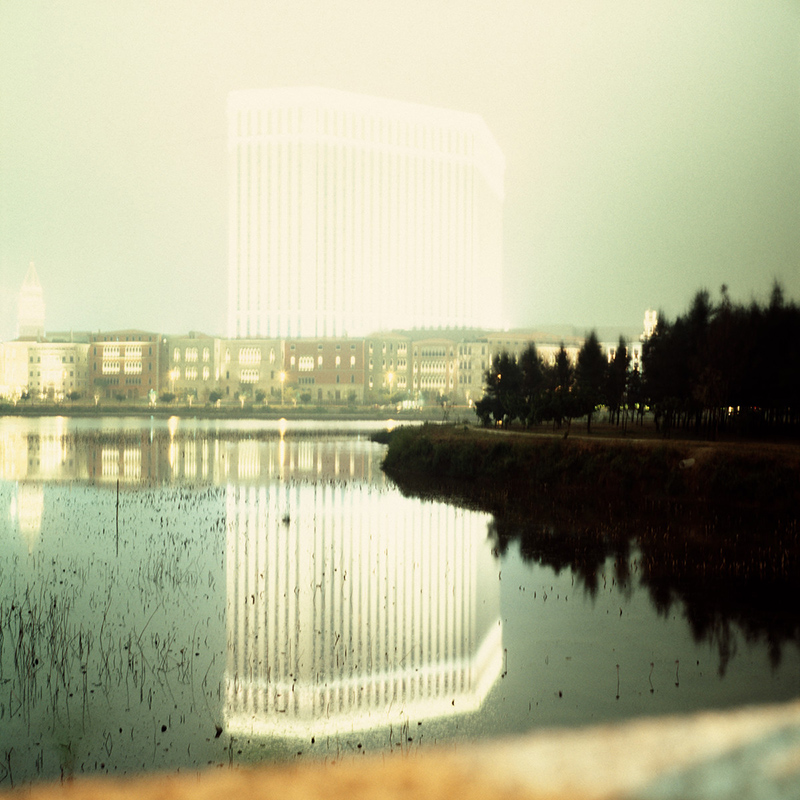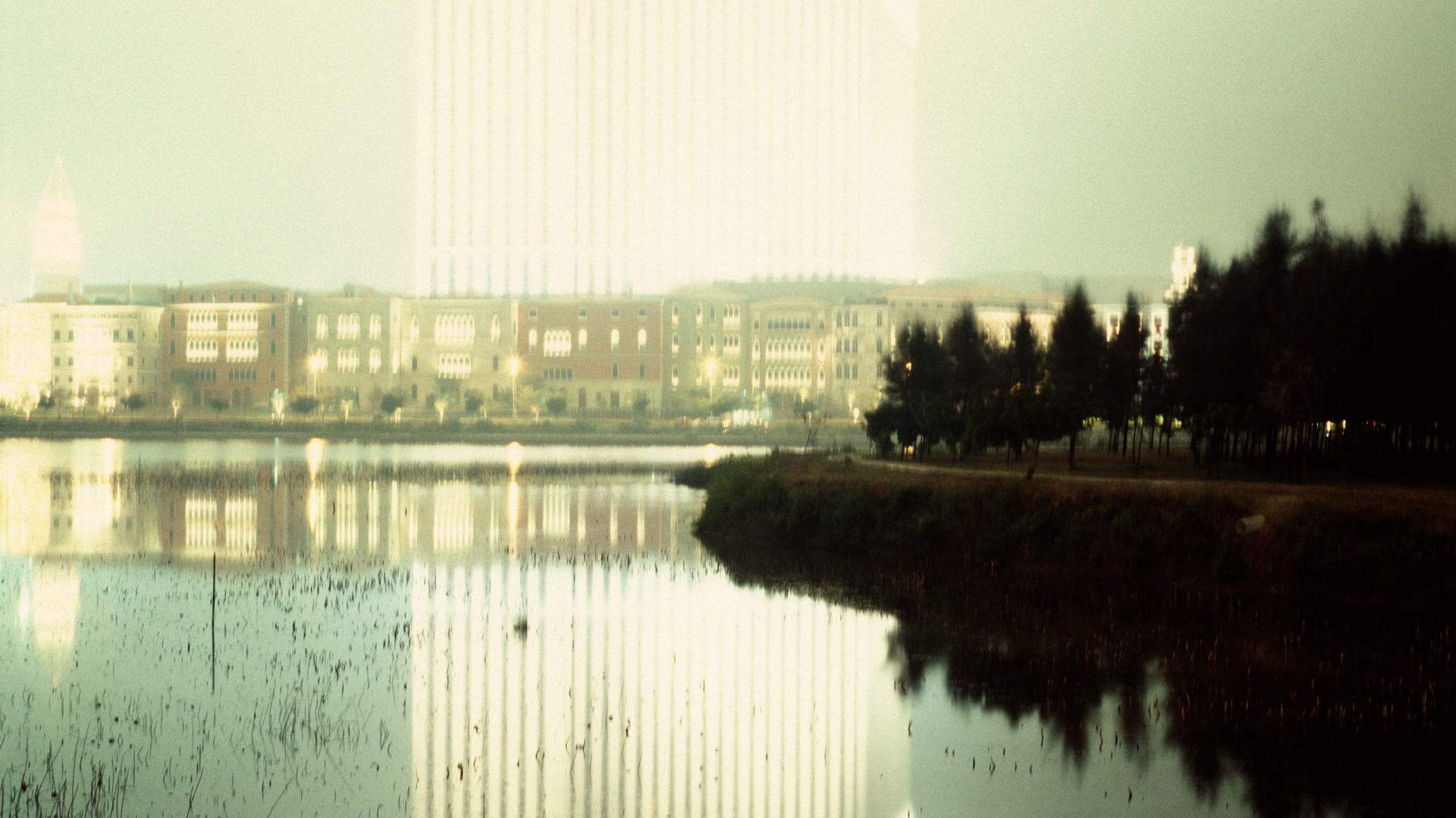Strange Times
In the scope of the pandemic caused by coronavirus SARS-CoV-2 and the resulting restrictions to movement and social interaction, it is worth recalling the work of artists who evoke the scenarios we are witnessing today and the feelings we are experiencing in this unusual situation. Some of the works by António Júlio Duarte (1965) and Nuno Cera (1972), two of the most remarkable Portuguese photographers of our time, jibe with precisely this strange time and space.
The series Smog, by Nuno Cera, is composed of 22 photographs and was displayed in a joint exhibition with Noé Sendas, in 2000, at the Museum of Natural History, in Lisbon. The term ‘smog’, an agglutination of the words ‘smoke’ and ‘fog’, defines a kind of air pollution that occurs in large cities.

The two images by Nuno Cera displayed here are representative of his work, in the sense that they reveal spaces that either look towards a vanishing point or culminate in it. The artist often photographs places of passing, of crossing, creating territories of transition between moments, between conditions1 – they are places which refer to temporality. By not showing specific references to the cities in which he took the photographs, Nuno Cera also reflects on cities in general, populated by ‘globalisation, anxiety, disappointment, isolation’.2

António Júlio Duarte, in turn, created the series White Noise, composed of 32 photographs, which he compiled in a book with the same name, published in 2011. The title refers to a mixture of indistinguishable sounds, like radio static or the noise of passing traffic, which, depending on their volume, can give rise to conflicting sensations, oscillating between comforting or soothing and unbearable, or even tortuous. Like smog, white noise also tends to be a defining feature of large cities – cities which do not sleep and which have appealing nightlife, including casinos. The images reveal to us curious details of the entrances of various casinos in Macau, displaying the characteristic luxury of these types of places, but with a dreamlike tone, owing mostly to the flash applied by the artist, but also the absence of people in the photographs.

The two artists evoke specific aspects of large urban areas – smog and white noise – heavily populated, polluted and noisy. Paradoxically, the photographs of both series do not reflect this reality. Taking the example of the images which illustrate this article, we are confronted with deserted cities and empty casinos, in a disconcerting parallel with the current situation. While these photographs seemed previously to be the stuff of dreams or a post-apocalyptic scenario, they are now becoming a reality before our eyes. Now, due to the policy of social isolation that has been adopted around the world, we could even see them as a documentary record.

Nuno Cera and António Júlio Duarte also seem to work on distorting temporal references, in a perpetual darkness, only illuminated by artificial lights. We are left hovering, at an impasse, in a suspension of time. This disorientation can be understood to intersect with that of citizens who are currently in isolation – days of the week, weekends and public holidays are practically indistinguishable in the course of the new daily routine. Similarly to Nuno Cera’s spaces of transition, this will also be a case of moving between conditions, between normal and the ‘new normal’.
1 Delfim Sardo, «Crossings» (accessed on 20 April 2020).
2 José Oliveira, «Smog #15» (accessed on 18 April 2020).

